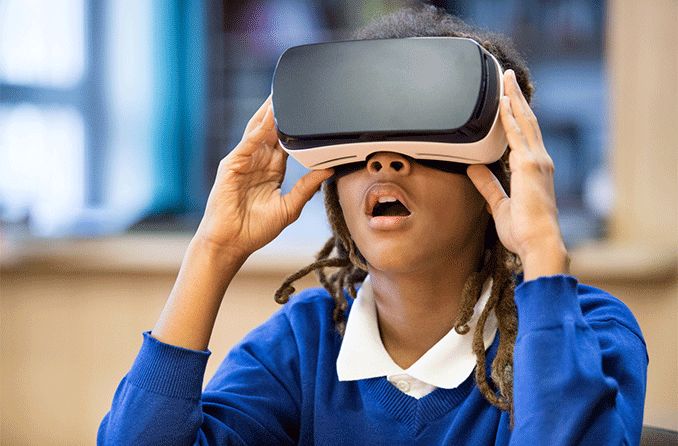Is the Grass Greener in AR and VR?
The children of the 1980s seem to have had it all. They had leisure time outdoors playing sports riding bicycles and skateboards until the sun went down. Indoors, they spent time watching television and playing video games of the time. Children of today, however, spend significantly less time outside than children of any previous generation. Average American children play outside for 35% less time than their parents did when they were their age, and those between the ages of six and seventeen only engage in free-form, unstructured play outside for seven minutes each day on average (Lee et al., 2021). Some say technology is to blame. Advances in technology have led to a rise in the amount of time that young people spend interacting with screen-based technologies, such as watching television, playing video game consoles, or using a mobile device, a computer, or a tablet. There is no doubt that children find technology engaging. There is also no doubt that prolonged use of existing technologies can have detrimental effects on children's health and development (Oswald et al., 2020).
Augmented Reality (AR) and Virtual Reality (VR) significantly differ from existing technologies. The primary objective of both VR and AR is to immerse the user in a digital setting or to superimpose digital elements onto the actual world. Technologies currently in place and used, such as on-demand audio and videos, text, and high-resolution images on screens, are passive when compared to AR and VR, where users actively engage by moving about in the environment or manipulating objects often in a state of sensory overload given the enhanced sights, sounds, and haptic feedback (Nael et al., 2022). There are inherent safety, health, and ethical concerns arising from the use of AR and VR technologies by children (Kaimara et al., 2022). Examples include addiction, which threatens responsibilities and relationships in the real world. Excessive time spent in virtual environments can cause depression and feelings of loneliness. Prolonged AR and VR sessions can lead to headaches, motion sickness, balance disorders, and eye strain. AR and VR can give rise to a person's false expectations about what relationships, social interactions, aesthetics, and other aspects of the real world, causing dissatisfaction with reality. The transformative rise of AR and VR technologies would pair well with caution and mindfulness of the risks.
References
Kaimara, P., Oikonomou, A., & Deliyannis, I. (2022). Could virtual reality applications pose real risks to children and adolescents? A systematic review of ethical issues and concerns. Virtual Reality, 26(2), 697-735.
Lee, E. Y., Bains, A., Hunter, S., Ament, A., Brazo-Sayavera, J., Carson, V., ... & Tremblay, M. S. (2021). Systematic review of the correlates of outdoor play and time among children aged 3-12 years. International Journal of Behavioral Nutrition and Physical Activity, 18(1), 1-46.
Naef, A. C., Jeitziner, M. M., Knobel, S. E., Exl, M. T., Müri, R. M., Jakob, S. M., ... & Gerber, S. M. (2022). Investigating the role of auditory and visual sensory inputs for inducing relaxation during virtual reality stimulation. Scientific reports, 12(1), 17073.
Oswald, T. K., Rumbold, A. R., Kedzior, S. G., & Moore, V. M. (2020). Psychological impacts of “screen time” and “green time” for children and adolescents: A systematic scoping review. PloS one, 15(9), e0237725.

Comments
Post a Comment